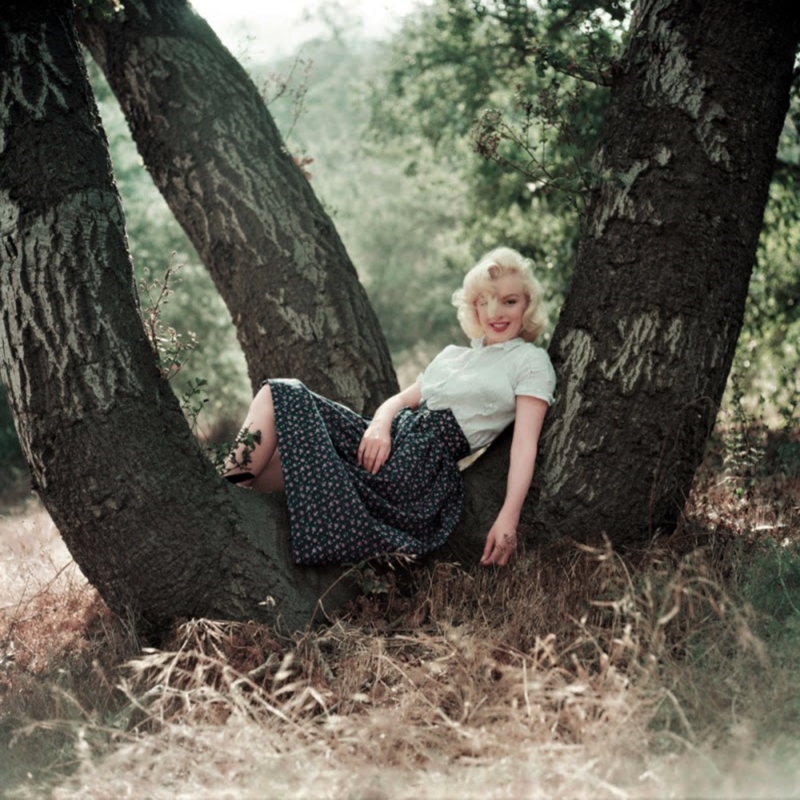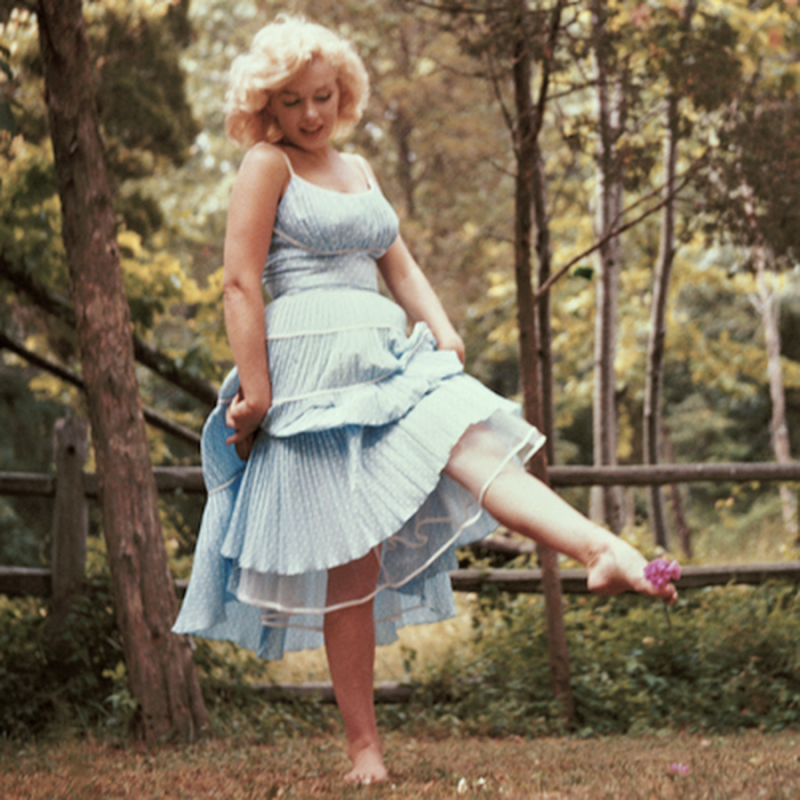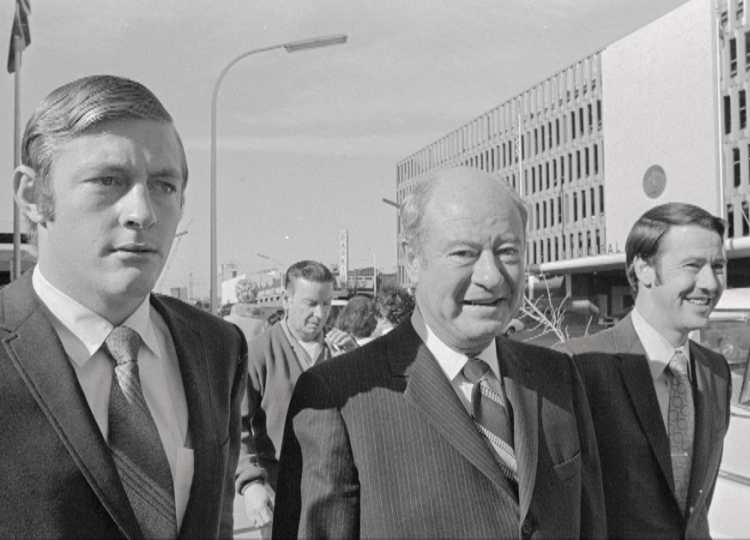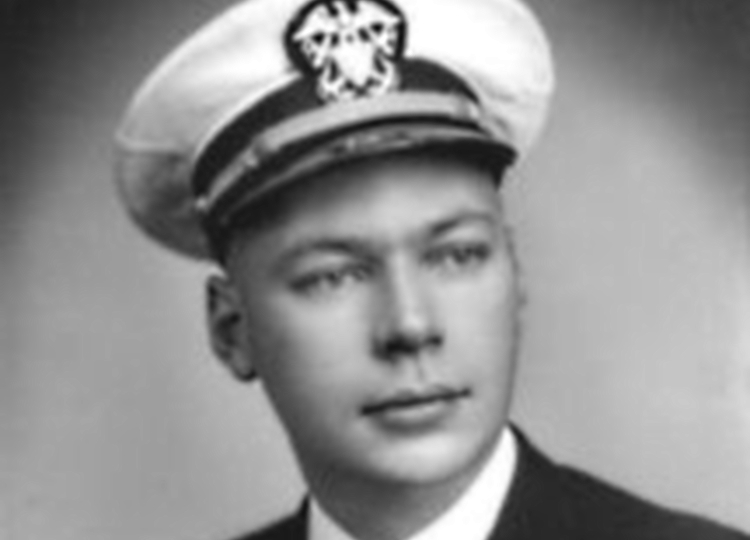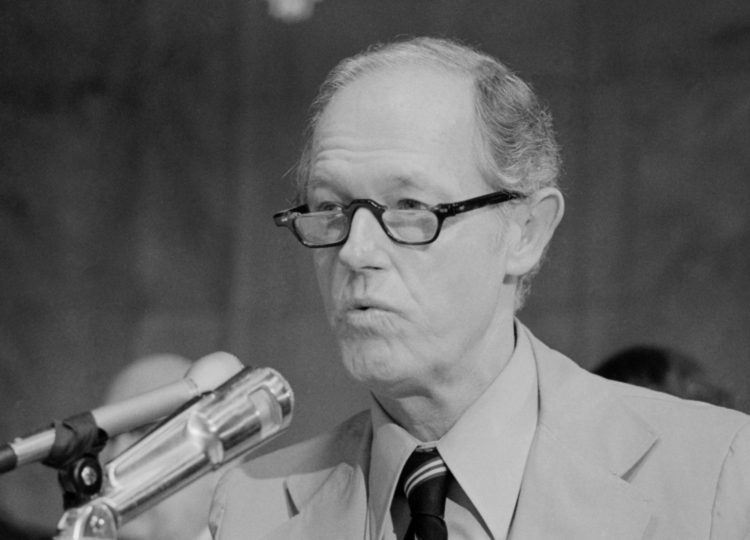Marilyn, John Kennedy and Nuclear Testing
Was Marilyn Monroe murdered? A burning question posed in 2006 by CBS and its investigative program, 48 Hours, hosted by Peter Van Sant. In the episode entitled The Marilyn Tapes, the alleged investigative program considered and treated Marilyn’s death as a most serious and a most relevant topic, even though, by 2006, Marilyn had been dead for four decades plus four years. Additionally, the 2006 episode introduced a new possible motive for Marilyn’s murder at the busy and wicked hands of the powerful Kennedy clan.
As testifiers who appeared on camera along with Van Sant, CBS served its audience Marilyn’s faux best girlfriend, Jeanne Carmen, not long before she died in 2007, and Tony Curtis, who in this particular appearance on screen claimed that he desperately loved Marilyn, while in several previous on screen appearances, he claimed to desperately despise her. On its Silver Salver of Stars, CBS also served its audience Hugh Hefner, the aging playboy who never met Marilyn but made millions of dollars printing her image from time to time, and a pathologist, Dr. Steven Karch, who suggested that Marilyn’s body should be exhumed and more samples taken for additional testing. For what purpose I could only speculate. Also, Van Sant spoke on screen with the Assistant District Attorney, Ronald Carroll, who was involved in the threshold re-investigation into Marilyn’s death in 1982, and finally, Anthony Summers, Marilyn’s ardent pathographer. He presented a fifty-six year old FBI file about a luncheon which occurred, according to the file, in July of 1962 at Peter Lawford’s beach house. Allegedly, both Marilyn and John Kennedy attended the luncheon. First, the actual files:
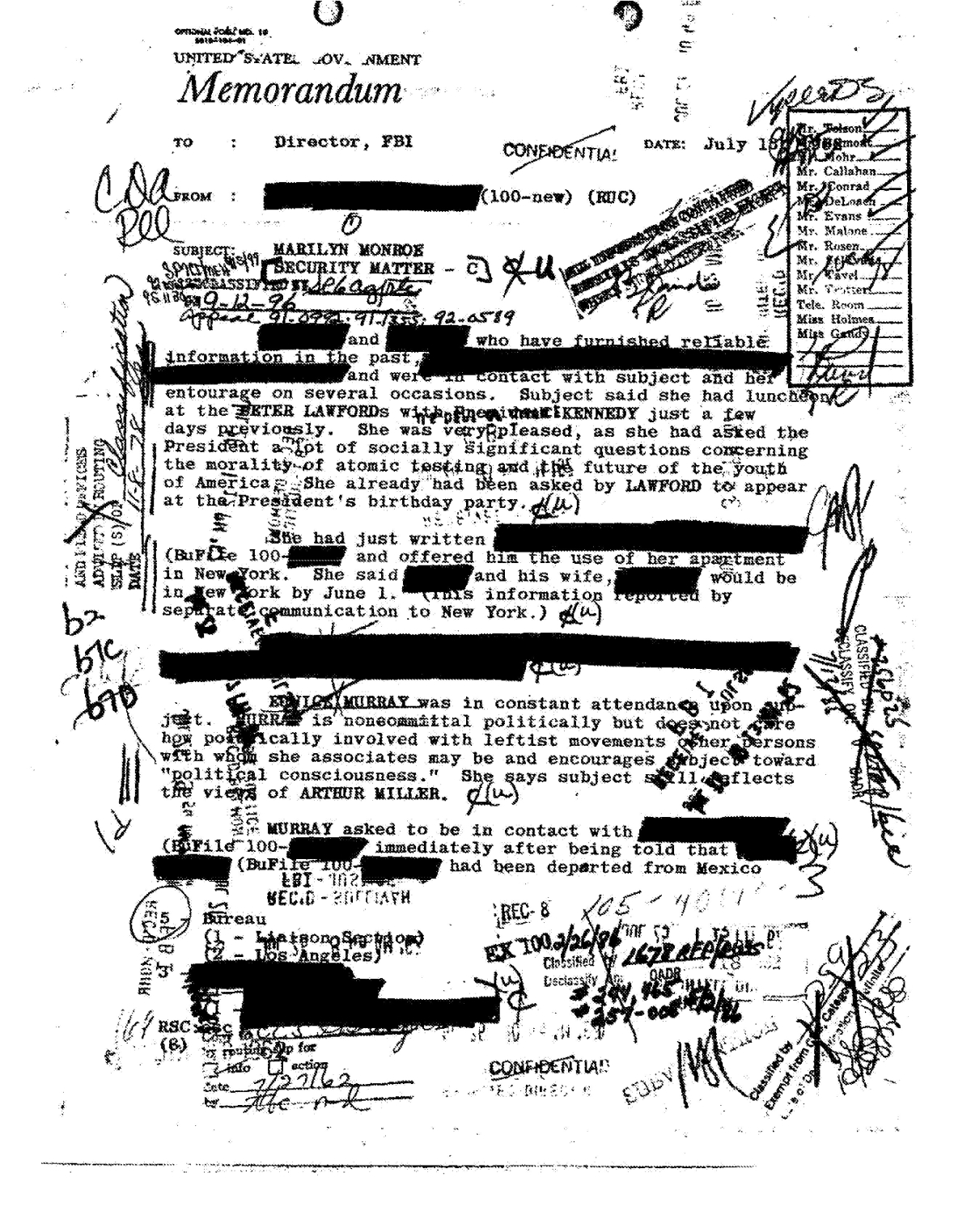
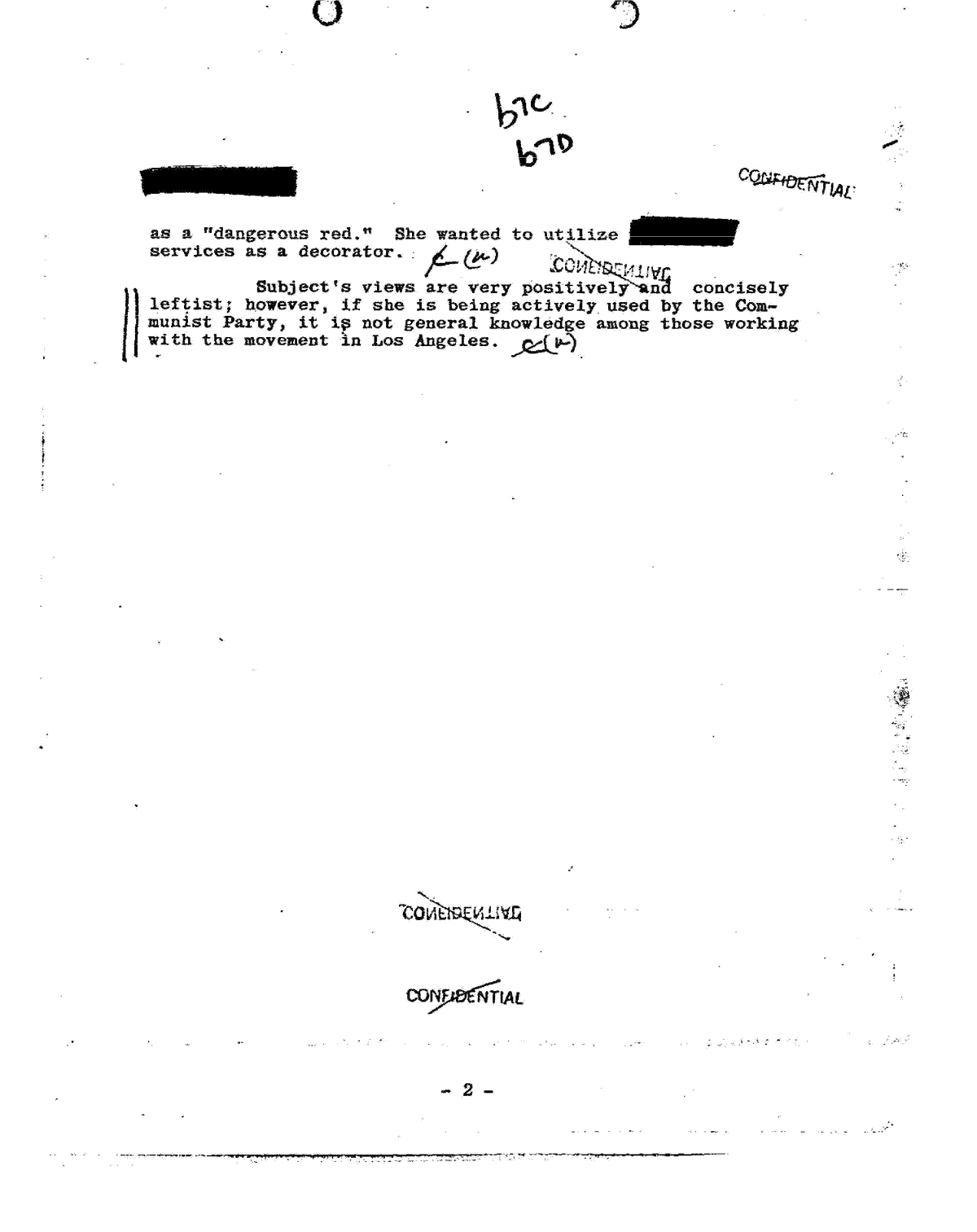
In part the FBI file, dispatched from Mexico City and dated the 13th of July in 1962, contained the following:
TO: Director, FBI
FROM: Legat, Mexico City (100-new) (RUC)
SUBJECT: MARILYN MONROE
SECURITY MATTER
[Redacted] and [redacted] who have furnished reliable information in the past, [redacted] and were in contact with subject and her entourage on several occasions. Subject said she had luncheon at the Peter Lawfords with President Kennedy just a few days previously. She was very pleased, as she asked the President a lot of socially significant questions concerning the morality of atomic testing and the future of the youth of America. She already had been asked by Lawford to appear at the President’s birthday party.
She had just written Frederick Vanderbilt Field (BuFile 100-2278) and offered him the use of her apartment in New York. She said Field and his wife, [redacted] would be in New York by June 1. (This information reported by separate communication to New York.)
Paula Strasberg was at subject’s home waiting for her at the time of sources’ visit.
Eunice Murray was in constant attendance upon subject. Murray is noncommittal politically but does not care how politically involved with leftist movements other persons with whom she associates may be and encourages subject toward “political consciousness.” She says subject still reflects the views of Arthur Miller.
Murray asked to be in contact with Mura Bright (Bufile 100-423228) immediately after being told that John Bright (Bufile 100-416491) had been deported from Mexico as a “dangerous red.” She wanted to utilize Bright’s services as a decorator.
Subject’s views are very positively and concisely leftist; however, if she is being actively used by the Communist Party, it is not general knowledge among those working with the movement in Los Angeles.
The preceding report contains many curious anomalies on which I will not linger; however, if we assume that the luncheon occurred during the month of July, which the report suggested, a few days prior to July the 13th, then the probability that the referenced luncheon actually occurred at all is certainly nil. What follows explains why.
According to the John F. Kennedy Presidential Library and Museum along with the website, History’s Home on the Web, the president was either in the nation’s capital, Camp David or Hyannis Port throughout the month of July in 1962, except when he delivered a 4th of July speech at Independence Hall in Philadelphia; therefore and obviously, he did not travel to California which leads to an obvious conclusion: President Kennedy did not meet Marilyn at the Lawford’s beach house for a luncheon in early July of 1962. At any rate, for a moment, let us accept that he attended the subject luncheon and engaged in the reported conversation with Marilyn; and let us evaluate the dialogue which passed between Peter Van Sant and Anthony Summers and the latter’s evaluation of the preceding curious and obviously inaccurate FBI file.
Van Sant began by recapping Marilyn’s 1962 February trip to Mexico, commenting on her ever present friends and companions: the press and photographers. Then the serious dialogue between Van Sant and Summers began.
Van Sant declared that Marilyn engaged in several private and polemical convocations while she visited Mexico; and Anthony Summers declared that she conversed late at night with American Communists. Marilyn Monroe was not a dumb blonde, Summers declared. She was anything but; she was a woman who read extensively about, who enjoyed talking about and was passionate about politics. Van Sant declared that Marilyn’s late night controversial conversations and meetings with the American Communists aroused the interest of the FBI, who opened a file on her activities, a recently released file which indicated that the FBI considered her to be a security risk, a consideration that the program’s host found unbelievable. Was America’s sex symbol actually a security threat? he wondered incredulously. Anthony Summers responded: Yes and I’m afraid it’s not fanciful because here you had a woman who is close to both the president of the United States and to the Attorney General who goes to Mexico and talks into the night with known Communists. She was a security risk.
Marilyn’s trip to Mexico, Van Sant correctly noted, occurred during the height of the Cold War when President Kennedy was apparently obsessed with the Communist Regime in Cuba and the threat that regime posed to American security. That moment was perhaps the most sensitive moment in American history, according to Van Sant, arguably even the world’s history, regarding nuclear matters, a moment when Marilyn Monroe was actively conversing with known Communists and doing so not long before the Cuban Missile Crisis. Finally, in serious tones and with an appropriately serious face, Summers read from the July 13th FBI file presented above and noted that the report specifically mentioned how Marilyn Monroe, during her July luncheon meeting with President Kennedy, was very pleased as she asked the President a lot of socially significant questions concerning the morality of atomic testing. The luncheon allegedly memorialized by the FBI file, noted Van Sant, transpired a mere three months before the American military discovered ballistic missiles on the island of Cuba; and Summers dutifully noted: discussing nuclear matters with a security risk like Marilyn Monroe, during the time of that dreadful and frightening international crisis, had that event become publicly known, it would have been perniciously damaging to the Kennedy Administration, especially President Kennedy.
Shall we unpack the preceding?
Firstly, Van Sant implied that the FBI had never opened a file on Marilyn prior to her 1962 trip to Mexico City where she cavorted with dangerous Communists, certainly a false implication, not only with respect to the FBI’s surveillance of Marilyn but also with respect to the Communists that she met in Mexico City: they were not dangerous. Even in 1963, the FBI reported: ACGM continues as an informal association of persons with mutual communist sympathies […]. No attempts at formal organization. Most are relatively inactive for fear of disturbing their status in Mexico.
Secondly, the FBI began to declassify Marilyn’s FBI files in the late seventies. One file in the group of which I have copies displays a declassification stamp dated in 1979. The FBI released many of the first declassified files to the public during the eighties. According to the FBI’s website, those files were heavily redacted. In 2012, fifty years after Marilyn’s death, the FBI reprocessed many of the previously released files and discarded many of the redactions. The FBI posted electronic, downloadable copies of those files on their website beginning in 2013.
Thirdly, both Van Sant and Summers implied that Marilyn discussed politics with nefarious Communists in Mexico City and that those political talks, which were being monitored by the FBI, included nuclear matters. Not even one FBI memorandum that has been declassified and released to the public suggested that Marilyn’s visit to Mexico City was politically motivated or that any of her conversations had anything at all to do with nuclear armaments or nuclear testing. The purpose of her trip to Mexico was to buy Mexican furniture for her new Brentwood hacienda. In fact, the report presented by Van Sant and Summers noted the following: even though Marilyn’s political views were very positively and concisely leftist, if she was being actively used by the Communist Party, such was not general knowledge among those working with the movement in Los Angeles, a clear indication that Marilyn’s trip to Mexico was not politically motivated, a clear indication ignored by both Peter Van Sant and Anthony Summers.
Fourthly, while writing his Marilyn pathography, Anthony Summers interviewed his primary source, Robert Slatzer, over a period of two years, the pathographer alleged, and conducted many intensive interviews, during which Slatzer’s story was invariably consistent. I assume Slatzer never mentioned his opinion regarding Marilyn’s political propensities or perhaps Summers never asked Slatzer politically oriented questions. According to Slatzer’s second iteration of Marilyn’s life and death, The Marilyn Files, she did not realize that Robert Kennedy was leading her on a stroll down that well trod garden path. A more politically sophisticated woman would have known better, Slatzer denoted about Marilyn’s lack of political savvy. But Marilyn Monroe knew almost nothing about politics. Growing up poor, passed from family to family, politics had not been a big concern for her; and certainly the dozens of affairs in which she engaged, passed from lover to lover, seriously limited the amount of time available for her to study political science. Then Slatzer added that her meteoric rise in the movies did not leave her much time for political study and her friends doubted that she even knew the difference between Republicans and Democrats (Slatzer 40). There appears to be a difference of opinion between Summers and his consistent source.
Fifthly, both Van Sant and Summers attempted to link Marilyn to the American and Soviet missile crisis; however, that scary event occurred in October of 1962. By then, Marilyn had been dead for approximately three months. Besides, evidence establishing such a link did not and does not exist.
Finally, Summers clearly proclaimed that Marilyn’s involvement with dangerous Communists south of the border, when combined with the luncheon questions she allegedly posed to John Kennedy about the morality of atomic testing, made her a security threat. Summers then insinuated that Marilyn’s apparent anti-testing position provided the government generally, and the Kennedys specifically, with a potential motive to eliminate her as a threat, a potential motive for her murder. Before accepting Summers’ unfounded insinuation, please consider the following.
The United States ended the war with Japan by dropping two atomic bombs, the first on August the 6th and the second on August the 9th, both in 1945. The nuclear age was born. Thereafter, the testing of nuclear weapons with greater and greater destructive power became commonplace, not only by the United States but also by the Soviet Union. In 1955, the United Nations attempted to negotiate a treaty to ban nuclear testing but differences and conflicts between the nations involved ended that effort.
With the discovery of radioactive material in milk and wheat across the northern United States, the dangers of atmospheric nuclear testing became obvious. A large portion of the public began to question both the prudence and the morality of not only testing nuclear weapons but the prudence and morality of allowing weapons with such destructive power to even exist. In 1958, both the United States and the USSR agreed to a moratorium on testing that lasted until 1961, when in August of that year, the Soviets announced that they would resume atmospheric testing. Since John Kennedy actually wanted to ban nuclear weapons, a position he had assumed in 1956 and maintained during the presidential campaign in 1960, he pursued several diplomatic avenues in hopes of resuming negotiations with the Soviets, all of which failed. President Kennedy finally allowed the United States to resume testing in April of 1962 when he succumbed to the pressures exerted by his military advisors and a large portion of the American public: both feared that the Soviets had gained a clear nuclear advantage.
But then, in October, superpowers America and the Soviet Union, John F. Kennedy and Nikita Khrushchev, positioned themselves eye to eye over the small island of Cuba and some Soviet missiles positioned there. Nuclear war appeared to be imminent as Russian ships loaded with additional missiles neared a quarantined Cuba. Fortunately, one of the two most powerful leaders in the world blinked; it happened to be Khrushchev. That crisis resulted in the Limited Nuclear Test Ban Treaty, signed in Moscow one year to the day after Marilyn was found dead in Brentwood, California: August the 5th in 1963.
If the conversation between Marilyn and John Kennedy had actually occurred, then certainly Marilyn would have been voicing only an opinion which, at the time, was shared by many Americans and a sentiment that President Kennedy had already heard from the First Lady, not to mention that the president shared fundamental concerns over the proliferation and use of nuclear weapons. According to Donald Spoto’s Jacqueline Kennedy biography, the First Lady tirelessly worked for better relations with the Soviet Union; and she also encouraged Jack to join England and the Soviet Union in the Nuclear Test Ban Treaty, even though some of the president’s staff advised against doing so. Staff advisers notwithstanding, Jacqueline prevailed. Also, the First Lady pressured her husband to approve the sale of wheat to the Soviet Union. For Jacqueline, according to Spoto, political considerations became secondary when starvation was an issue. Most paramount for Jacqueline Kennedy, most significant was a fundamental and an essential humanity.
For Marilyn, too, politics was a matter of humanity; and for Anthony Summers to assert that her death was somehow related to her moralistic views suggested that any American, possibly even Jacqueline Kennedy, who held identical views as Marilyn, was also a target for the government’s assassins. But more importantly, Summers’ assertion represented an attempt to create evidence and proof that Marilyn was murdered where neither evidence nor proof actually existed and was, as such, a fanciful flight into journalistic exaggeration and conspiratorial cherry picking, propensities and common maladies suffered by most, if not all, like-minded conspiracists.
But here’s another rub: twenty-one years earlier, in his Marilyn pathography, Summers had a different perspective; and his stated position in 2006 contradicted his written position of 1985. In his pathography, Summers acknowledged that the referenced FBI memorandum memorialized a lunch meeting between Marilyn and the president in early July of 1962; but his investigation regarding that alleged meeting revealed no day in the relevant time-frame when John Kennedy could have been in Los Angeles ―he made an official visit to Mexico at the end of June (Summers 57: emphasis mine). In short, then, John Kennedy was not in Los Angeles during early July of 1962; Marilyn and John Kennedy did not meet at that time, as I so asserted; and the alleged paramours never had a controversial conversation about the morality of nuclear weapons and nuclear testing. So, the story as presented by 48 Hours was a baseless fabrication.
Still, Summers then made a quantum leap from John Kennedy to his brother, Robert. In Summers’ opinion, the sensitive conversation actually transpired when Marilyn met the attorney general at the Lawford’s beach house on June the 27th; however, Summers did not offer even a fragmentary piece of evidence to support his opinion. Momentarily, if we accept Summers’ quantum leap, accept that the sensitive conversation about nuclear matters involved Marilyn and the attorney general, why, then, did Summers present the FBI file as memorializing events correctly? Why did he present the FBI file as fact during the 48 Hours program in 2006 if, in 1985, he knew it was not possible for Marilyn and John Kennedy to have met as the FBI file indicated? A fellow can only surmise and suppose Summers’ probable motivation.
During a 2009 interview for ABC News, Randy Taraborrelli stated:
I have to tell you, the FBI files on Marilyn Monroe are so fascinating because they’re just so untrue. They would never hold up to today’s journalism scrutiny; and, you know, in looking at those files I realized that J. Edgar Hoover, the head of the FBI, had such a vengeance against the Kennedys that I think that he allowed a lot of information to be put into those files that just was not true.1(Link to interview:
<https://www.youtube.com/watch?v=tHn5M2F38rw>)
Most historians, credible biographers and even some conspiracists who desperately hoped to discover a piece of incriminating evidence in the FBI’s declassified files concede that they do not reveal anything at all about Marilyn’s life or her death, her alleged murder, who may have been involved in her alleged murder and who may have covered up her alleged murder. Zip zero nada.
I have reviewed or read all of the declassified documents contained in Marilyn’s FBI files, at least the ones that I have been able to procure. What they amount to is a colossal waste of time and resources and no doubt cost planet Earth a small forest. In fact, the files are even inconclusive regarding Marilyn’s political ideology, confirming only that she was slightly left leaning and was influenced by Arthur Miller. Imagine that! Mostly the files read like copy from fan magazines and frequently include sycophantic articles from those and similar publications or newspapers that tracked and reported on Marilyn’s movements during her daily life as she engaged in seditious activities like salon appointments, going to dinner and movie premières, shopping and making movies and, of course, having affairs. The surveillance reports rely heavily on copy from journalist and gossip columnist, Walter Winchell, a well-known Communist hater, FBI’s asset and J. Edgar Hoover’s pal.
Not only have I reviewed the declassified FBI files relating to Marilyn, I downloaded PDFs of the FBI’s files pertaining to Robert Kennedy, John Roselli and Sam Giancana along with pertinent declassified CIA files including the now infamous, but humorously named, “Family Jewels”. I list those documents in the bibliography and together they comprise over three thousand pages. I admit that I have not read them all; but I have scanned many of them while also performing a word search within each PDF file. The acronym MM(mm) did not appear; the word M(m)arilyn did not appear; the word M(m)onroe appeared in relation to street addresses and telephone numbers. The words M(m)arilyn and M(m)onroe and her name appeared in the files dedicated to her activities, of course, and her name appeared in various files dedicated to Arthur Miller and his activities; however, within the files dedicated to the activities of various intelligence agents and mobsters, the words M(m)arilyn M(m)onroe, as a proper name, did not appear. She was never mentioned.
Of course, conspiracists are difficult to satisfy and convince and so they have an answer: the significant files, the files with the real facts about Marilyn Monroe’s death, have either not been released and probably will never be released, if such files actually exist, or those files have been destroyed. As proof of this, they point to a controversial document some contend was mistakenly released by the CIA; but more about that document will appear in Section 12.
